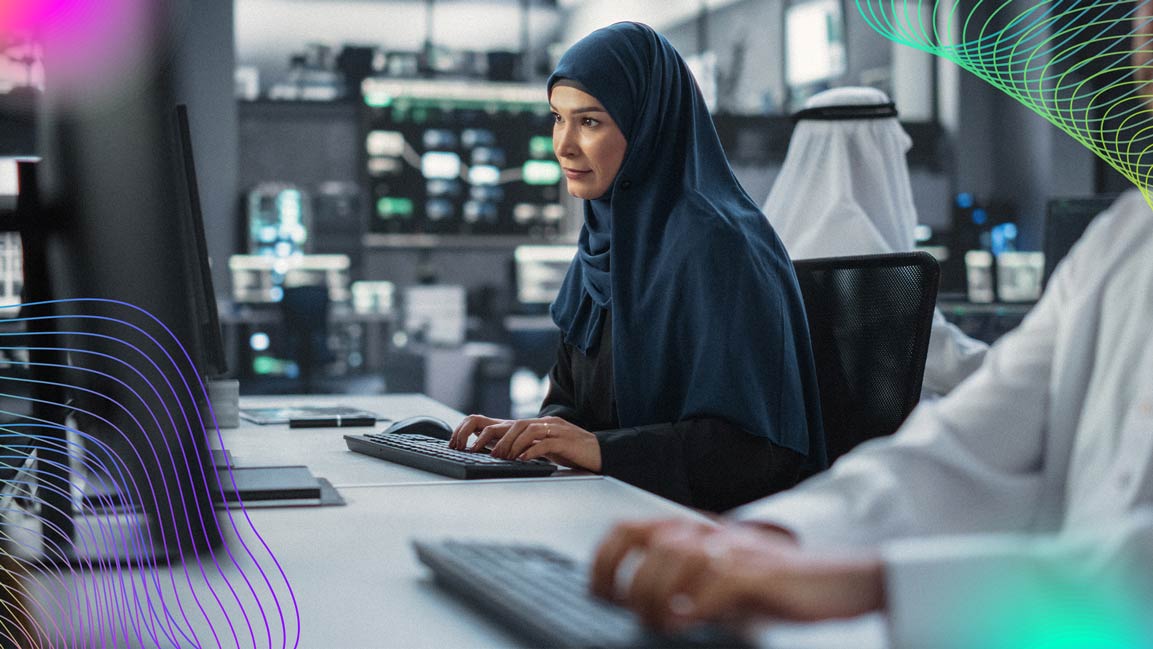- | 8:00 am
Cameras on or off? How to settle the debate on video calls for good
The decision to keep cameras on during meetings has both benefits and drawbacks that must be weighed, and leaders must make informed decisions for their teams to ensure productive and comfortable virtual meetings.

A recent survey of 4,200 WFH employees about online meetings found that 49% report a positive impact from engagement when their cameras are on, and only 10% felt disengagement from turning on cameras.
As leaders are figuring out hybrid and remote work, they are facing the challenge of deciding whether to encourage employees to keep their cameras on during meetings. This decision has a significant impact on communication, engagement, and trust-building within the team.
PROS
There are several benefits to keeping cameras on during video conferences.
Facial cues improve communication and build trust: Research shows that one of the primary benefits of keeping cameras on during virtual meetings is the ability to pick up on facial cues. When we can see someone’s facial expressions and body language, it can help us understand their thoughts and feelings better. Seeing a colleague smile, nod in agreement, or furrow their brow in confusion can provide valuable cues that are often lost in text-based communication. When team members feel more connected and in sync with each other, they are better equipped to work together effectively, leading to better collaboration. This, in turn, leads to improved communication and the building of trust between team members.
I can attest to that from my experience helping 21 organizations transition to long-term hybrid work arrangements. One of my clients, a midsize IT company, found that after implementing a policy of keeping cameras on during virtual meetings, they saw a significant improvement in the level of trust and cooperation among team members.
Helps build relationships: Scholars find visual cues, such as facial expressions and body language, play a significant role in how we understand and interpret others’ emotions and intentions. By seeing these cues during virtual meetings, employees can better understand each other and build stronger relationships.
As we have seen in a midsize IT company, having cameras on during videoconferencing allowed employees to see each other’s expressions and body language, which created a more personal and relaxed atmosphere. This led to employees feeling more comfortable opening up and sharing their thoughts, which in turn improved team collaboration and overall work dynamic.
Better accountability and focus: Studies show when cameras are on, it sends a signal to everyone that the meeting is an important and serious matter, and that everyone is expected to be fully engaged and focused. For example, a large financial services company found that after implementing a policy of keeping cameras on during virtual meetings, they saw a significant improvement in the level of engagement and focus among team members.
Reduces distractions and multitasking: According to researchers, team members are less likely to feel tempted to get away with distractions or multitasking, as their faces and bodies are visible on the screen. A midsize construction company found that after implementing a policy of keeping cameras on during virtual meetings, they saw a significant decrease in the level of distractions and multitasking among their back-office team members.
Improves engagement: Scientists found that it’s easier for team members to connect with one another and feel more invested in the meeting. This, in turn, can lead to improved outcomes for the company. In one midsize marketing firm, after implementing a policy of keeping cameras on during virtual meetings, the leaders saw a significant improvement in the level of engagement and collaboration among team members.
Shows respect: Researchers find when cameras are on, it sends a signal to everyone that everyone fully respects the meeting and values everyone’s time. This sends a positive message to their colleagues and helps in building trust and camaraderie. One client, a large retail company, found that after implementing a policy of keeping cameras on during virtual meetings, they saw a significant improvement in the level of mutual respect as evaluated by surveys.
Aids career progression: A recent survey from Vyopta, a software company, found that 92% of executives at medium to large firms think workers who turn cameras off during meetings do not have a long-term future at the company. This indicates the importance of keeping video cameras on during virtual meetings. Leaders believe that by turning cameras on, employees demonstrate that they are serious about their work and take the meeting seriously.
CONS
While there are several benefits to keeping cameras on during videoconferences, there are also several drawbacks to consider.
Privacy concerns: Research shows some employees may feel uncomfortable with having their personal space constantly on display and worry about being judged or monitored. This is especially true for employees who work from home, as their living space may be visible to colleagues on the video call.
For example, a midsize IT company found that several employees were uncomfortable with having their cameras on during meetings, citing concerns about privacy and the appearance of their living spaces. The company responded by developing privacy guidelines, such as encouraging employees to use a virtual background if they wish to do so, and even developed a variety of backgrounds with the company’s logo for staff to use.
Worries about being judged on living space: The same research finds worries about being judged on their living space can also be a hindrance in virtual meetings. Employees may feel uncomfortable with the idea of having their homes monitored, and may worry about being judged based on their personal lives.
A midsize e-commerce company had a number of employees who felt uncomfortable with feeling like their home was monitored, and that they were being judged based on their personal lives. The company addressed this issue by creating a supportive and nonjudgmental environment, and by providing employees with resources and training to help them overcome their worries and fears.
Technical difficulties: Poor lighting, camera angles, and internet bandwidth can all lead to a less than optimal viewing experience for everyone on the call. This can be particularly challenging for employees who don’t have access to the latest technology or who don’t have the technical expertise to resolve these issues.
At a large manufacturing company in the Upper Midwest, some back-office employees living in a more rural area struggled with technical difficulties during video calls. The company addressed this issue by providing additional support and resources, such as training on how to optimize camera and lighting setups, as well as offering more advanced technology to employees who needed it.
Increased pressure to look presentable at all times: Studies show that keeping cameras on during meetings can also increase the pressure on employees to look presentable at all times. This can lead to a more formal and less relaxed atmosphere during calls, which can be draining for employees, especially women and new hires, recent scholarship finds.
A midsize marketing company noticed that several employees felt added pressure to dress professionally and maintain a well-groomed appearance during video calls. This caused a more draining and less relaxed atmosphere, leading to decreased productivity and morale. Given the focus on creativity and innovation at this company, such drain undermined the ability to do effective marketing. The company responded by encouraging employees to dress comfortably and reminding them that the focus should be on the content of the meeting, not their appearance.
Fears and anxieties: For some employees, the thought of being on camera during a meeting can be anxiety-inducing, as research finds. This can lead to feelings of self-consciousness and decreased participation in the call, which can be damaging to the effectiveness of the meeting. A midsize engineering firm found that several employees had fears and anxieties about being on camera during meetings. To address this issue, the company offered counseling and support services, as well as opportunities for employees to practice and become more comfortable with videoconferencing.
Worries about micromanagement and monitoring: According to scientists, employees may feel as if they are constantly being watched, which can lead to feelings of being micromanaged.
At large financial services company, employees felt like they were being constantly monitored, which led to feelings of micromanagement. The company addressed this issue by creating a more relaxed and less formal environment during virtual meetings, allowing employees to feel more comfortable and less monitored.
HOW COGNITIVE BIASES SHAPE DECISIONS
Various cognitive biases may impact the decision to keep cameras on or off during meetings. These biases can impact the perceptions of both the meeting participants and the leaders themselves, leading to skewed conclusions and decisions. Two important cognitive biases that have an impact on this topic are the halo effect and loss aversion.
The halo effect refers to the tendency to make broad generalizations based on a single positive characteristic. In the context of keeping cameras on during meetings, this bias could lead to overgeneralization of the benefits of keeping cameras on.
For example, if a meeting with cameras on results in better engagement and participation, leaders may conclude that all meetings should have cameras on. This could lead to neglect of the other factors, such as privacy concerns and technical difficulties, that may impact the decision.
Loss aversion, on the other hand, refers to the tendency to place a higher value on avoiding losses than on acquiring gains. In the context of keeping cameras on during meetings, loss aversion could lead to an overemphasis on avoiding the potential drawbacks of having cameras on, such as privacy concerns and technical difficulties. Employees may avoid having cameras on during meetings altogether to avoid any negative consequences.
It is crucial to be aware of these cognitive biases and their impact on decision-making, as they can lead to skewed conclusions and decisions about keeping cameras on or off during meetings. By recognizing and addressing these biases, leaders can make more informed and objective decisions about the use of cameras during meetings.
CAMERAS ON OR OFF?
When I show clients the research about the pros and cons, they often sit with it for a while, and then ask me what they should do. I tell them it’s hard to weigh the pros and cons against each if you’re approaching this matter from a binary perspective.
Instead, the key is to provide support for your employees to improve their ability to keep cameras on. That involved financial support to address lighting and Wi-Fi speed. It also involved mitigating concerns about creating negative impressions by a less formal attire and background through culture change.
After that, employees need to be informed about all the research above. That information will help employees make more informed decisions about their camera usage.
Next, provide training to your employees and develop a policy about when they should keep cameras on or off, rather than always having them on or off. The key consideration should be about the benefits of having cameras on for engagement and communication via nonverbal cues, versus the cons of drain and strain, especially for women and junior employees.
With training and policy, a key consideration is to encourage employees that those who are about to speak should have their cameras on. That’s because when an employee speaks, their goal is to communicate to others; they will be much better able to do so if they turn their cameras on, through conveying nonverbal cues.
Then, clarify that any meeting that involves significant decision-making should have all attendees turn on their cameras. After all, it’s important for all attendees at a decision-making session to be able to read the nonverbal cues of other participants: much of our decision-making stems from our emotions and comes through in our nonverbals.
Most meetings should not have a default expectation of having cameras on, barring high-level executive meetings with significant decision-making going on all the time. There’s no need to cause drain and lower employee productivity and well-being if there’s not a sufficiently important reason to do so.
By addressing a number of employee concerns upfront, and having a balanced approach with training and policies, it’s possible to find a win-win outcome that best aligns employee well-being, engagement, and communication.







































